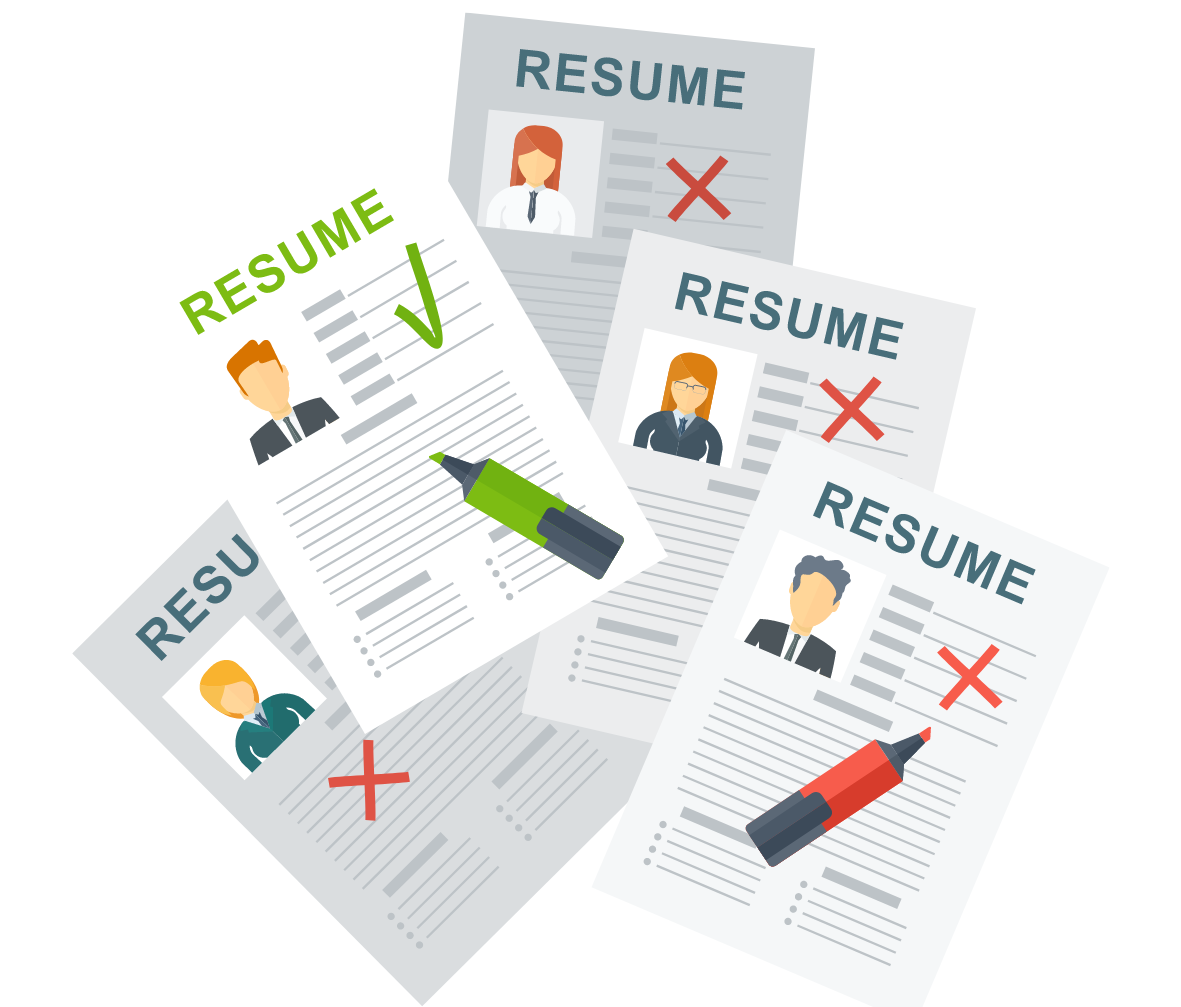Spinwell Global
Interesting Jobs for Interesting People
Autumn Budget 2024: What It Means for Recruitment

As the leaves fall and the days grow shorter, the Autumn Budget brings with it a host of economic strategies and financial forecasts that can significantly impact various sectors, including recruitment. With the recent announcements from Chancellor of the Exchequer, the budget not only outlines financial allocations but also sets the tone for the job market and employment dynamics. Here’s a look at what this year’s Autumn Budget means for recruitment in the coming months.
Increased Investment in Skills Development
One of the key highlights of the Autumn Budget is the increased investment in skills development and training programs. The government’s focus on upskilling the workforce is a welcome response to the UK’s ongoing skill shortages across industries. This is likely to benefit recruitment agencies and employers alike, as they will have access to a more skilled talent pool.
Implication for Recruitment: Recruiters may find it easier to source candidates with the necessary skills for high-demand roles, reducing the time and resources spent on training new hires. Companies may also expand their recruitment efforts to include more junior candidates, knowing they can offer robust training programs.
Support for Small and Medium Enterprises (SMEs)
The budget also includes measures aimed at supporting small and medium enterprises, which are crucial for job creation in the UK. With incentives such as tax reliefs and grants for SMEs, these businesses can invest more in their workforce.
Implication for Recruitment: Recruitment agencies might see an uptick in demand from SMEs looking to expand their teams. As these businesses thrive, they will likely require more talent, leading to an increase in job openings and opportunities for recruiters to place candidates in fulfilling roles.
Focus on Green Jobs
With the UK’s commitment to achieving net-zero emissions by 2050, the Autumn Budget emphasises investment in green technologies and jobs. Industries focusing on sustainability are set to receive funding, which will pave the way for new job creation.
Implication for Recruitment: Recruiters should prepare for a surge in demand for roles in renewable energy, environmental science, and sustainable practices. This shift will require agencies to be proactive in sourcing candidates with relevant expertise and a passion for sustainability.
Changes to Employment Laws
The budget may also signal potential changes to employment laws, which can affect hiring practices. For instance, discussions around flexible working arrangements and employee benefits could reshape the recruitment landscape.
Implication for Recruitment: Recruiters will need to stay informed about these changes to advise their clients effectively. Organisations that adapt quickly to new employment trends, such as remote work or enhanced employee benefits, may attract a more diverse range of candidates.
Economic Uncertainty and Its Impact on Hiring
While the budget aims to stimulate growth, the backdrop of economic uncertainty due to factors like inflation and global market fluctuations could lead employers to be cautious in their hiring strategies.
Implication for Recruitment: A cautious approach may extend hiring processes, requiring recruiters to be strategic in outreach and emphasise the value of top talent.
In conclusion, this year’s Autumn Budget presents both challenges and opportunities for the recruitment sector. With a strong focus on skills development, support for SMEs, and the creation of green jobs, recruiters must adapt and align their strategies accordingly. By staying ahead of the trends and understanding the implications of the budget, recruitment agencies can position themselves as valuable partners in navigating the evolving job market.
As the landscape changes, those who remain agile and informed will be best equipped to connect talent with opportunity in this dynamic environment.
Get in touch with us
NK
The Impact of the Autumn Budget on the UK Recruitment Industry

As the UK government prepares to unveil its Autumn Budget, the recruitment industry is keenly watching for policy changes, financial allocations, and economic forecasts that could affect hiring trends, workforce dynamics, and talent acquisition strategies. Here’s a breakdown of what the recruitment industry can expect from this year’s budget.
Economic Outlook and Employment Trends
The Autumn Budget typically reflects the government’s economic outlook, which can significantly influence recruitment. With ongoing discussions around inflation, wage growth, and economic recovery post-COVID-19, recruiters should anticipate potential adjustments in employment policy that may include:
- Investment in Job Creation: The government may announce initiatives aimed at stimulating job growth, particularly in sectors hit hardest by the pandemic. This could mean increased funding for training programs and apprenticeships, enhancing the talent pool available to employers.
- Support for Key Sectors: Specific industries, such as technology, healthcare, and green energy, may receive targeted support. Recruiters in these sectors should prepare for a surge in demand as companies expand to meet new governmental priorities.
Changes in Employment Legislation
The Autumn Budget may also introduce changes in employment legislation that could impact recruitment practices:
- Flexible Working Policies: Legislative changes on flexible working rights may require recruitment agencies to adjust their remote hiring policies for talent acquisition.
- Diversity and Inclusion Initiatives: The government may incentivise companies to prioritise diversity and inclusive hiring practices in the workplace.. Recruiters should be prepared to adapt their strategies to meet these new standards.
Financial Considerations for Recruitment Agencies
Budget allocations can also affect the operational viability of recruitment agencies:
- Tax Incentives: Potential tax reliefs or incentives for businesses that hire may directly influence recruitment agency operations, making it easier for companies to invest in new talent.
- Funding for Training and Development: If the budget includes provisions for workforce training, recruitment agencies may find opportunities to partner with businesses to provide upskilling and reskilling programs, enhancing their service offerings.
Focus on Technology and Innovation
In an increasingly digital world, the Autumn Budget may highlight the importance of technology in recruitment:
- Investment in Digital Infrastructure: Budget announcements may reflect a commitment to enhancing digital capabilities across industries, including recruitment. Recruiters should consider adopting new technologies to streamline processes, improve candidate experience, and leverage data analytics.
- Remote Work Tools: As remote work continues to be a pivotal aspect of the employment landscape, there may be funding for technological solutions that aid remote recruitment and enhance collaboration.
The Autumn Budget carries significant implications for the recruitment industry, influencing everything from economic conditions to employment legislation and technological advancement. Therefore, recruitment agencies must stay agile and responsive to these changes, adapting their strategies to align with new governmental priorities.
Prepare for a dynamic hiring landscape prioritising flexibility, inclusivity, and innovation as we await the announcements. By doing so, this enables the recruitment industry to navigate challenges and seize opportunities in the evolving market.
Get in touch with us
NK
Understanding Burnout: 5 Signs and How to Recover

In today’s fast-paced world, burnout has become an increasingly common phenomenon. Whether you’re a busy professional, a student juggling multiple responsibilities, or a caregiver, the demands of everyday life can sometimes feel overwhelming. Recognising the signs of burnout is crucial in order to take proactive steps toward recovery. Here, we’ll explore five key signs of burnout and offer practical strategies for reclaiming your well-being.
1. Chronic Fatigue
Signs: If you find yourself feeling exhausted, no matter how much sleep you get, chronic fatigue is a telltale sign of burnout. This fatigue can manifest physically, mentally, and emotionally, making it difficult to engage in daily activities.
Recovery Tips:
- Prioritise Sleep: Aim for 7-9 hours of quality sleep each night. Establish a calming bedtime routine to improve sleep quality.
- Take Breaks: Incorporate short breaks throughout your day to recharge. Even a few minutes away from your desk can help clear your mind and boost your energy.
2. Decreased Performance
Signs: You may notice a decline in your productivity and efficiency at work or in your personal life. Tasks that once felt manageable may now seem daunting, leading to feelings of frustration and inadequacy.
Recovery Tips:
- Set Realistic Goals: Break down tasks into smaller, manageable steps and set achievable goals to regain a sense of accomplishment.
- Seek Support: Don’t hesitate to ask for help from coworkers, friends, or family. Collaborating can relieve some pressure and improve morale.
3. Emotional Distress
Signs: Feelings of irritability, anxiety, or sadness are common indicators of burnout. You may find yourself more easily frustrated and struggling to cope with everyday challenges.
Recovery Tips:
- Practice Mindfulness: Engage in mindfulness techniques such as meditation, deep breathing exercises, or yoga. These practices can help ground you and reduce stress levels.
- Express Your Feelings: Journaling or talking with someone you trust can provide an outlet for your emotions and help you process what you’re experiencing.
4. Detachment and Cynicism
Signs: A sense of detachment from your work, colleagues, or responsibilities, coupled with a cynical outlook, can signal burnout. You may feel increasingly disconnected or indifferent about what used to motivate you.
Recovery Tips:
- Reconnect with Your Purpose: Reflect on why you started your job or pursued your current path. Re-establishing your sense of purpose can rekindle motivation.
- Engage in Social Activities: Spend time with friends and loved ones to foster connections and remind yourself of the positive aspects of your life.
5. Physical Symptoms
Signs: Burnout can manifest physically as headaches, digestive issues, or other stress-related ailments. These symptoms can further exacerbate feelings of fatigue and distress.
Recovery Tips:
- Adopt Healthy Habits: Focus on nutritious eating, regular exercise, and hydration. A healthy body can help mitigate physical symptoms and improve your overall mood.
- Consult a Professional: If physical symptoms persist, consider consulting a healthcare provider. They can help rule out other health issues and provide guidance on managing stress.
Burnout is a serious condition that can affect anyone, but recognising the signs and taking proactive steps toward recovery can make a significant difference. By prioritising self-care, setting realistic goals, and seeking support, you can navigate through burnout and emerge stronger. Remember, it’s okay to take a step back and focus on your well-being—you deserve it!
Get in touch with us
NK
Temp vs. Perm Roles
 In today’s fast-paced job market, professionals often face the decision between temporary (temp) roles and permanent (perm) positions. Each type of employment comes with its own set of advantages and disadvantages, and understanding these can greatly influence your career trajectory.
In today’s fast-paced job market, professionals often face the decision between temporary (temp) roles and permanent (perm) positions. Each type of employment comes with its own set of advantages and disadvantages, and understanding these can greatly influence your career trajectory.
In this blog post, we’ll explore the key differences between temp and perm roles, the benefits and challenges of each, and tips for making the right choice for your career goals.
What Are Temp and Perm Roles?
Temporary Roles (Temp):
Temp roles are typically short-term positions that can last from a few days to several months. These positions often arise to cover for employees on leave, meet seasonal demands, or manage project-based workloads. Temp jobs are usually filled through staffing agencies that match candidates with companies in need.
Permanent Roles (Perm):
Permanent roles, on the other hand, are long-term positions where employees are hired with the expectation of ongoing employment. These roles often come with a more structured career path, benefits, and job security. Permanent employees are usually considered an integral part of the company’s workforce.
Advantages of Temp Roles
Flexibility:
One of the most appealing aspects of temp roles is the flexibility they offer. You can choose your assignments and work schedules, making it easier to balance personal commitments or explore different industries.
Variety of Experience:
Temp roles allow you to gain experience in various fields. This exposure can help you discover what you truly enjoy and expand your skill set, making you a more attractive candidate for future perm roles.
Networking Opportunities:
Working in different companies enables you to build a diverse professional network. You can make valuable connections that may lead to permanent job offers or future temp assignments.
Quick Employment:
If you’re looking to get back into the workforce quickly, temp roles often have a faster hiring process compared to perm positions, allowing you to start earning sooner.
Advantages of Perm Roles
Job Security:
Permanent positions typically offer greater job stability. Employees often enjoy a sense of security that comes with knowing they have a long-term job, reducing the stress that can accompany temporary assignments.
Benefits:
Perm roles usually come with a benefits package that may include health insurance, retirement plans, paid time off, and other perks. These benefits can greatly enhance your overall compensation and work-life balance.
Career Advancement:
With a perm role, there is often a clearer path for career advancement within the organisation. Employees can pursue promotions and professional development opportunities that can lead to long-term growth.
Company Culture:
Being a permanent employee allows you to immerse yourself in the company culture, build lasting relationships with colleagues, and contribute to the organisation’s long-term goals.
Challenges of Temp Roles
Lack of Benefits:
Temp positions often do not come with benefits, which can be a significant downside for those seeking stability in their personal lives.
Job Uncertainty:
The transient nature of temp work means that job security is minimal. You may find yourself constantly searching for your next assignment.
Limited Integration:
As a temp, you may not always feel fully integrated into the company culture or team dynamics, which can impact your overall job satisfaction.
Challenges of Perm Roles
Less Flexibility:
Permanent roles often come with a fixed schedule and fewer opportunities for remote work or flexible hours, which can be a downside for those who value work-life balance.
Longer Hiring Process:
Landing a perm job can take time, as companies often have more rigorous hiring processes, including multiple interviews and background checks.
Potential for Stagnation:
In some cases, permanent roles can lead to a lack of variety in work responsibilities, which might result in feelings of stagnation or boredom over time.
Making the Right Choice
When deciding between temp and perm roles, consider the following:
Career Goals:
What are your long-term career objectives? If you’re looking for stability and growth within a specific company, a perm role might be the better choice. However, if you want to explore different industries or gain diverse experience, temp roles can provide that flexibility.
Personal Circumstances:
Assess your current lifestyle and commitments. If you need flexibility due to family or education, temp roles may suit your needs better.
Financial Considerations:
Evaluate your financial situation. Permanent roles generally offer more stable income and benefits, which may be essential for your financial planning.
In conclusion, both temp and perm roles have their unique advantages and challenges. Understanding these differences is crucial for making an informed decision that aligns with your career aspirations and personal circumstances. Whether you choose the flexibility of temp work or the stability of a permanent position, each path can lead to valuable experiences that contribute to your professional growth. Ultimately, the right choice depends on your individual needs and career goals. Embrace the journey, and make the most of whichever role you choose!
Get in touch with us
NK
Spotting CV Red Flags: 5 Warning Signs to Watch For (And How to Steer Clear)

As a hiring manager, sifting through piles of CVs can be a daunting task. Amidst the sea of well-crafted resumes, certain red flags can quickly catch your eye and raise concerns about a candidate’s qualifications or fit for the role. Recognising these warning signs is crucial in identifying applicants who may not be the best match – saving you time, resources, and the headache of a bad hire down the line.
Here are 5 common CV red flags to watch out for, and tips on how to steer clear of them:
Unexplained Gaps in Employment History
Lengthy gaps between jobs can raise questions about a candidate’s work history and motivations. While understandable in some cases, such as taking time off for personal reasons, it’s important to understand the context. Reach out to candidates about any significant employment gaps to get a clear picture.
Job Hopping
Frequent job changes, especially within short timeframes, can signal a lack of commitment or an inability to settle into a role. While some job hopping is normal early in one’s career, excessive switching from one position to the next may indicate deeper issues.
Vague or Unclear Job Descriptions
Ambiguous job titles and responsibilities can be a red flag, making it difficult to assess a candidate’s true experience and capabilities. Seek clarification on their day-to-day duties and how their skills align with the open position.
Typos and Grammar Errors
A sloppy, error-ridden CV can suggest a lack of attention to detail or poor communication skills – both crucial in many roles. Therefore carefully proofreading each application will weed out any glaring mistakes.
Unprofessional Email Addresses
While seemingly minor, an inappropriate email address (think “partyanimal@email.com”) can raise questions about a candidate’s maturity and professionalism. Encourage applicants to use a standard, name-based email for all job-related correspondence.
By identifying common CV red flags, you can weed out unfit candidates therefore focussing on those who truly stand out.
Get in touch with us
NK
Career Development Tips for Candidates: Your Path to Success

In today’s fast-paced job market, career development is no longer a linear journey but an ongoing process of learning, growth, and adaptation. Whether you’re a recent graduate, a mid-career professional, or someone looking to switch fields, investing in your career development is essential for long-term success. Here are some key strategies and advice to help you navigate your career path.
Set Clear Goals
The first step in your career development journey is to establish clear, achievable goals. Take the time to reflect on what you truly want from your career. Are you aiming for a promotion, a complete career change, or simply looking to enhance your skills? Setting specific, measurable, achievable, relevant, and time-bound (SMART) goals can give you a clear direction and help you stay focused.
Invest in Your Skills
In an ever-evolving job market, staying relevant means continually upgrading your skills. Consider enrolling in courses, attending workshops, or pursuing certifications that align with your career aspirations. Online platforms such as Coursera, Udemy, and LinkedIn Learning offer a plethora of resources that can help you enhance your knowledge and skills from the comfort of your home. Additionally, don’t underestimate the value of soft skills—communication, teamwork, and problem-solving abilities are often just as important as technical skills. Employers increasingly seek candidates who can collaborate effectively and adapt to changing circumstances.
Network Strategically
Building and maintaining a professional network is crucial for career development. Attend industry events, join professional associations, and connect with colleagues on platforms like LinkedIn. Networking isn’t just about finding job opportunities; it’s also about sharing knowledge, learning from others, and gaining insights into your field. Consider reaching out to mentors who can provide guidance and support as you navigate your career path. A mentor can offer valuable advice based on their experiences and help you identify potential opportunities.
Seek Feedback and Reflect
Feedback is a powerful tool for personal growth. Regularly seek constructive feedback from colleagues, supervisors, or mentors to identify your strengths and areas for improvement. Use this feedback to make informed decisions about your career development. Moreover, take time to reflect on your experiences and progress. Are you moving towards your goals? Are there new interests or aspirations you’d like to explore? Regular reflection can help you stay aligned with your career objectives and make necessary adjustments along the way.
Embrace Change and Be Adaptable
The job market is constantly changing, and the ability to adapt is a key trait of successful professionals. Be open to new opportunities and experiences, even if they are outside your comfort zone. Embracing change can lead to unexpected and rewarding career paths.Develop a growth mindset, which encourages you to view challenges as opportunities for learning and development. This approach will not only enhance your resilience but also make you more attractive to potential employers.
Balance Professional and Personal Life
Finally, remember that career development isn’t solely about professional achievements; it’s also about maintaining a healthy work-life balance. Prioritising your well-being is essential for sustained success and fulfilment. Make time for hobbies, exercise, and relaxation to recharge and stay motivated.
Career development is a continuous journey that requires dedication, adaptability, and an openness to learning. By setting clear goals, investing in your skills, networking strategically, seeking feedback, embracing change, and maintaining a work-life balance, you can navigate your career path with confidence and purpose. Remember, your career is not just about reaching a destination; it’s about the experiences and growth you gain along the way. Start today, and take charge of your career development for a brighter future ahead.
Get in touch with us
NK
Current Trends in UK Recruitment
Current Trends in UK Recruitment

The recruitment landscape in the UK is undergoing significant changes as of mid-2024, influenced by various economic, technological, and social factors.
Shift Towards Flexibility and Remote Work
One of the most notable trends is the increased demand for flexibility in work arrangements. Many employers are now offering remote working options and flexible hours to attract talent. This shift is reshaping office culture and the benefits that companies offer to employees
Rise of AI in Recruitment
Artificial Intelligence (AI) is becoming a game-changer in the recruitment process. Organizations are increasingly leveraging AI to enhance their hiring processes, making them more efficient and data-driven. This transformation allows for better matching of candidates to job opportunities, streamlining the recruitment process significantly
Focus on Sustainability and Green Jobs
With the Labour Party’s recent victory in the 2024 General Election, there is a strong emphasis on sustainability and green jobs. The government is pushing for a clean energy transition and aims to position the UK as a leader in green finance. This focus is expected to create high-quality jobs in a green economy, influencing recruitment strategies across various sectors
Economic Factors Affecting Hiring
Despite some positive trends, there are challenges in the job market. Employer confidence in hiring has not fully returned, leading to delays in permanent placements. The UK has seen a marginal decline in temporary billings, particularly in London and the South, while regions like the Midlands and North are experiencing growth in recruitment
Legislative Changes and Digital Transformation
The recruitment industry is also adapting to legislative changes that promote digital ID checks and data-led recruitment processes. These changes are expected to enhance the efficiency of hiring practices, allowing for quicker and more reliable candidate assessments
In summary, the UK recruitment landscape is evolving with a strong emphasis on flexibility, technological integration, sustainability, and adapting to economic conditions. These trends are shaping how companies attract and retain talent in a competitive market.
Get in touch with us
NK
Building Strong Connections: Establishing Positive Relationships with Candidates
Building Strong Connections: Establishing Positive Relationships with Candidates

As a recruiter, one of the most crucial aspects of your role is to establish positive relationships with candidates. Building trust and rapport can greatly enhance your ability to attract top talent, while also creating a positive candidate experience.
In this blog, we will explore some effective strategies for recruiters to establish a strong connection with candidates, ensuring a smooth and successful recruitment process.
- Personalise Your Approach: Every candidate is unique, and treating them as individuals can make a significant difference. Start by addressing candidates by their names and take the time to understand their career aspirations, skills, and values. Tailor your communication to reflect this understanding, and show genuine interest in their professional journey.
- Clear and Transparent Communication: Maintaining open and honest communication is essential to building trust. Clearly communicate the recruitment process, timelines, and expectations right from the start. Keep candidates informed at every stage, providing feedback when possible. Transparency about job details, including salary and benefits, also demonstrates a commitment to fairness and can help candidates make informed decisions.
- Showcase Your Company Culture: Candidates want to know more than just the job description; they want to understand the company culture and values. Highlight your organisation’s unique aspects, such as flexible work arrangements, employee development programs, or a supportive work environment. Share success stories of current employees to give candidates a glimpse into what it’s like to work for your company.
- Active Listening: During interviews and conversations, practice active listening. Pay attention to what candidates are saying, ask relevant follow-up questions, and show genuine interest in their responses. This not only helps you understand their skills and experiences better but also makes candidates feel valued and heard.
- Provide Constructive Feedback: Even if a candidate is not the right fit for a particular role, providing constructive feedback can leave a positive impression. Offer specific feedback on areas where they excelled and areas for improvement. This shows candidates that you value their efforts and are invested in their professional growth.
- Timely and Respectful Communication: Responding promptly to candidates’ queries or concerns shows respect for their time and interest. Avoid leaving candidates in the dark about their application status, and strive to provide timely updates throughout the recruitment process. Even if it’s bad news, delivering it respectfully and promptly can leave a lasting positive impression.
Establishing a positive relationship with candidates is essential for recruiters seeking to attract top talent and create a positive candidate experience. By personalising your approach, maintaining clear and transparent communication, showcasing your company culture, practicing active listening, providing constructive feedback, and demonstrating timely and respectful communication, you can build strong connections with candidates. Remember, a positive candidate experience can not only lead to successful hiring but also enhance your employer brand and reputation in the long run.
Get in touch with us
NK
Inside IR35 vs. Outside IR35: Understanding the Key Differences
Inside IR35 vs. Outside IR35: Understanding the Key Differences

In the world of contracting, the terms “Inside IR35” and “Outside IR35” have become quite familiar. Understanding the difference between these two terms is crucial, especially for contractors and businesses operating in the UK.
In this blog, we will delve into the intricacies of Inside IR35 and Outside IR35, exploring their definitions, implications, and the factors that determine their classification.
What is IR35?
Before we dive into the differences, let’s clarify what IR35 actually is. IR35, also known as the Intermediaries Legislation, was introduced by the UK government to tackle tax avoidance by individuals who work through an intermediary, such as a limited company, but would otherwise be considered employees for tax purposes.
Inside IR35: Inside IR35 refers to a working arrangement where the contractor is deemed to be an employee for tax purposes. In other words, their work is deemed to be within the scope of IR35. When a contract falls inside IR35, the contractor is subject to the same tax and National Insurance contributions as a regular employee.
Key Indicators of Inside IR35:
Control and Supervision:
If the client exercises significant control and supervision over the contractor’s work, it suggests an inside IR35 arrangement.
Mutuality of Obligation:
When there is an ongoing obligation for the contractor to provide work and the client to pay for it, it points towards inside IR35.
Right of Substitution:
If the contractor cannot provide a substitute to carry out the work, this indicates an inside IR35 arrangement.
Financial Risk:
When the contractor does not bear significant financial risk, such as not being liable for project failures or not having to rectify mistakes at their own expense, it leans towards inside IR35.
Outside IR35: Outside IR35 refers to a working arrangement where the contractor is deemed to be operating as a genuine business in their own right, rather than an employee. In this case, the contractor enjoys certain tax advantages.
Key Indicators of Outside IR35:
Control and Autonomy:
When the contractor has control over how the work is carried out and is not overly supervised, it suggests an outside IR35 arrangement.
No Mutuality of Obligation:
If there is no obligation for the contractor to provide work or for the client to offer it, it points towards outside IR35.
Right of Substitution:
If the contractor has the freedom to provide a substitute to carry out the work, it indicates an outside IR35 arrangement.
Financial Risk:
Contractors assuming financial risk, like project failures or rectifying mistakes at their expense, indicate an outside IR35 arrangement.
Implications of IR35 Status: The implications of being classified as either inside IR35 or outside IR35 are significant for both contractors and businesses. For contractors inside IR35, they are subject to PAYE tax and National Insurance contributions, reducing their take-home pay. On the other hand, contractors operating outside IR35 have the flexibility to manage their finances more tax-efficiently.
Understanding the difference between Inside IR35 and Outside IR35 is essential for contractors and businesses alike. The classification can have a significant impact on tax obligations and financial arrangements. Contractors can make informed decisions on IR35 status, ensuring compliance and optimising tax positions by understanding key indicators. Likewise, businesses can accurately assess their engagements with contractors, ensuring compliance and minimising financial risks.
Get in touch with us
NK
Weekly vs Monthly Pay: Which is the Better Option?
Weekly vs Monthly Pay: Which is the Better Option?

When it comes to receiving your hard-earned money, one important decision to make is whether you prefer to be paid on a weekly or monthly basis. The frequency of pay can have a significant impact on your financial planning and overall satisfaction. In this blog post, we will explore the advantages and disadvantages of both weekly and monthly pay in the context of the UK, helping you make an informed decision.
Weekly Pay
Financial Control:
Weekly pay can provide a greater sense of financial control, as you receive smaller, more frequent payments. This can be beneficial for budgeting purposes, allowing you to manage your expenses more effectively.
Flexibility
With weekly pay, you have the advantage of immediate access to your money. This can be particularly helpful if unexpected expenses arise or if you prefer to pay bills and manage your finances on a weekly basis.
Cash Flow
Weekly pay can provide a consistent cash flow, which may be advantageous for those who rely on regular income to meet their day-to-day needs. This can help alleviate financial stress and provide peace of mind.
Monthly Pay
Stability
Monthly pay offers a level of stability that can be beneficial for long-term financial planning. It provides a clear picture of your income and allows you to plan your expenses accordingly, such as rent or mortgage payments.
Predictability
With monthly pay, you can better anticipate your income, making it easier to plan for larger expenses or savings goals. This can be particularly useful for individuals who prefer a more structured approach to their finances.
Administrative Efficiency
From an employer’s perspective, monthly pay can be more administratively efficient, reducing the time and resources required to process payroll on a weekly basis. This can result in smoother operations for companies, potentially translating into better job security for employees.
Deciding between weekly and monthly pay ultimately depends on your personal preferences and financial circumstances. If you value financial control, flexibility, and a consistent cash flow, weekly pay may be the better option for you. On the other hand, if stability, predictability, and administrative efficiency are your priorities, monthly pay might be more suitable. It’s important to consider factors such as your budgeting style, financial goals, and the nature of your expenses before making a decision.
Remember, regardless of the frequency of pay, effective financial management and planning are crucial for achieving financial stability and success.
Get in touch with us
NK
Next Page »« Previous Page


